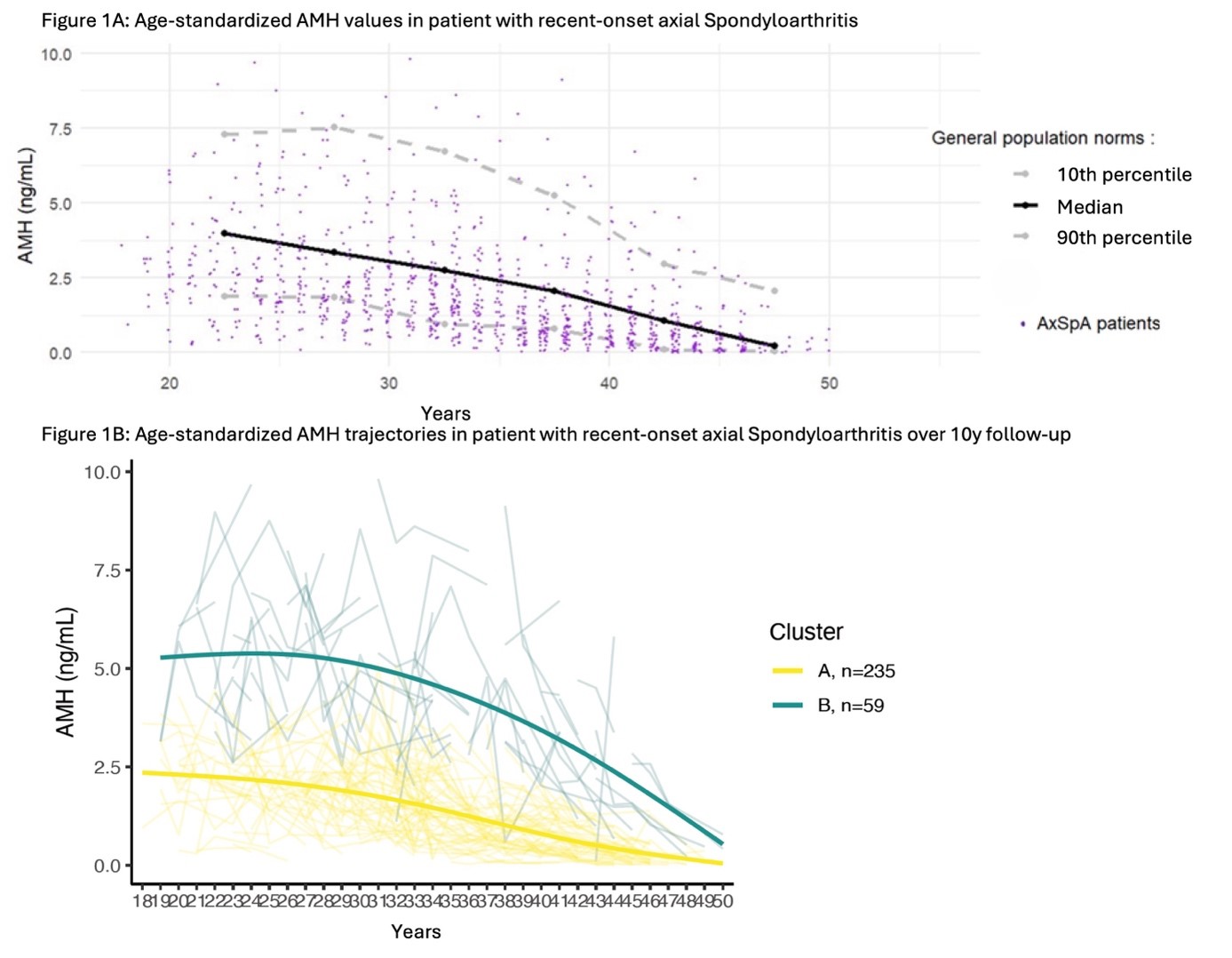Session Information
Date: Saturday, November 16, 2024
Title: SpA Including PsA – Diagnosis, Manifestations, & Outcomes Poster I
Session Type: Poster Session A
Session Time: 10:30AM-12:30PM
Background/Purpose: Data on fertility in women with spondyloarthritis (SpA) is sparse but seems to be impaired compared to the general population. Divergent results have been published with regard to Anti-Mullerian Hormone (AMH), an indicator of ovarian reserve, in these women. The objective of this study was to identify AMH trajectories over time and their association with disease activity and treatments.
Methods: This was an ancillary study of the DESIR cohort, an observational prospective French study with 10 years of follow-up, including 381 TNFi-naïve women of reproductive age with early axial spondyloarthritis (axSpA). Study visits were scheduled every 6 months for the first two years and yearly thereafter. Data on disease activity and fertility were collected prospectively. Serum AMH levels (ng/mL) were measured using the electrochemiluminescence method at 0, 6, 12, 24, 60, and 120 months. Mean AMH levels were compared to age-specific laboratory norms using Wilcoxon signed-rank tests.. Clusters of AMH trajectories from ages 18 to 45 were assessed using the k-means method, and factors associated with AMH changes over time were assessed with multivariable multilevel models.
Results: A total of 1706 AMH measurements were performed in 381 women over ten years of follow-up. The mean AMH level at baseline was 1.61 ± 1.93 ng/mL, with a range from 0.01 to 21.43 ng/mL. Compared to age-specific norms, AMH levels in our cohort were significantly lower for all age groups (p< 0.01) – Figure 1A.
Two trajectories of AMH decline were identified: the first (n=297) showed a lower AMH level at age 18, followed by a slow decrease until age 45. The second cluster (n=49) showed higher AMH levels at age 18, followed by a steeper decline until age 45(Figure 1B). Patients in the first cluster were significantly more likely to be smokers (36% vs. 20%, p=0.03), but no differences with regard to disease activity or treatments were identified.
Conclusion: AMH levels were significantly lower across almost all age groups in women with early axSpA compared to the general population. These findings highlight the need for further research into the factors affecting ovarian reserve and fertility in women with axSpA.
To cite this abstract in AMA style:
FRANC M, Guibourdenche J, Tournadre A, Molto A. AMH Titers in Women with Axial Spondyloarthritis Are Significantly Lower Compared to the General Population: An Analysis of the 10-year Follow-up of the DESIR Cohort [abstract]. Arthritis Rheumatol. 2024; 76 (suppl 9). https://acrabstracts.org/abstract/amh-titers-in-women-with-axial-spondyloarthritis-are-significantly-lower-compared-to-the-general-population-an-analysis-of-the-10-year-follow-up-of-the-desir-cohort/. Accessed .« Back to ACR Convergence 2024
ACR Meeting Abstracts - https://acrabstracts.org/abstract/amh-titers-in-women-with-axial-spondyloarthritis-are-significantly-lower-compared-to-the-general-population-an-analysis-of-the-10-year-follow-up-of-the-desir-cohort/

